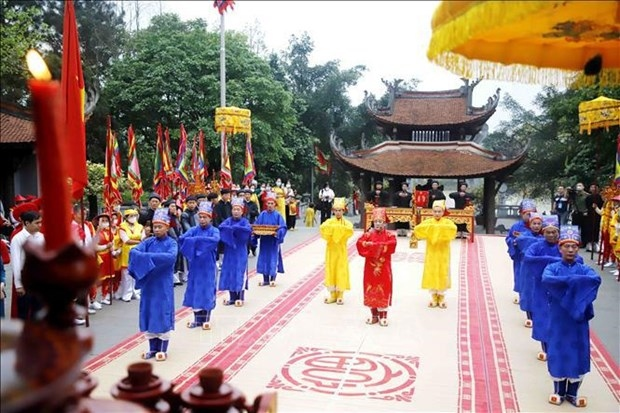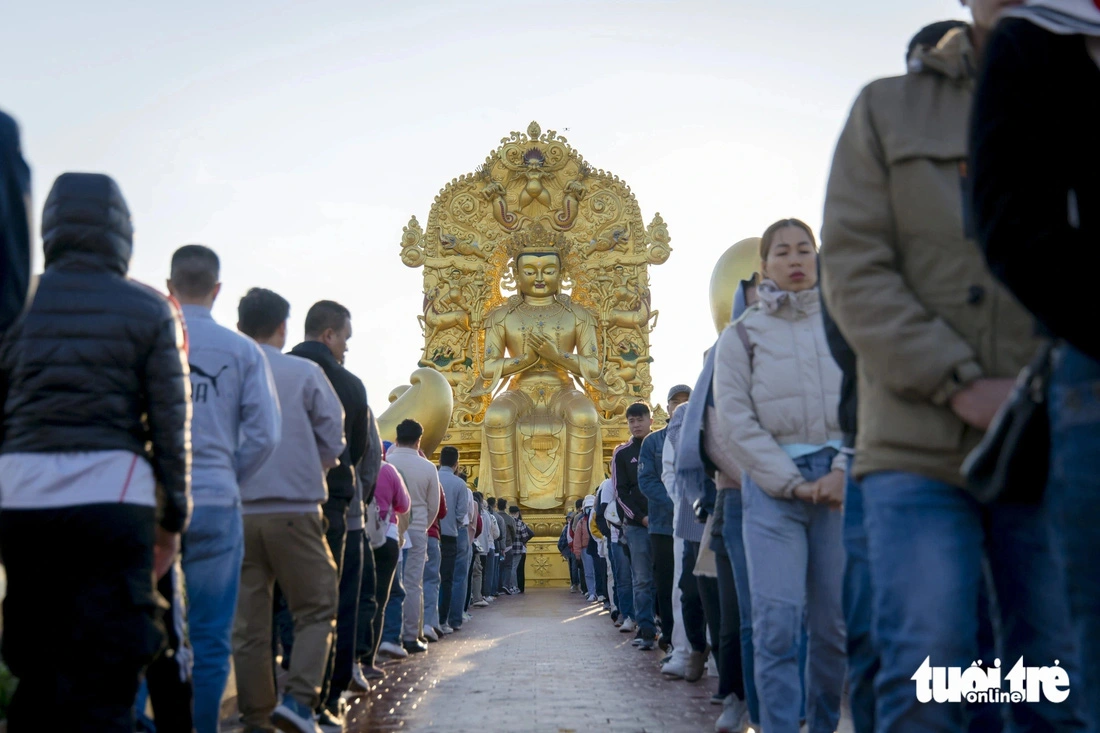At the Hung Kings Temple relic site, traditional ceremonies will be held at the temples dedicated to Lac Long Quan and Au Co to express gratitude to the founders of the country. In various localities, there will also be incense and flower offerings to the Hung Kings.
One of the highlights of the 10-day ceremony is the Hung Kings Temple Festival and the Week of UNESCO-listed intangible cultural heritages, which will take place at Hung Vuong square in Viet Tri city on April 4th, the first day of the third lunar month.
The event will feature exhibitions showcasing Vietnam’s tourism, culture, heritages, and sustainable development. There will also be a “Viet Tri Live music” street music program, the northwestern region’s tourism fair 2024, the Hung Vuong Cup volleyball tournament, an one commune-one product (OCOP) trade exhibition, a cuisine festival, xoan singing performances, and firework displays.
According to legend, Lac Long Quan (whose real name was Sung Lam) married Au Co, the fairy daughter of De Lai. Au Co gave birth to a pouch filled with 100 eggs, which hatched into a hundred sons. However, the couple soon separated, with Lac Long Quan taking 50 of the children to the coast and Au Co taking the others to the highlands.
Their eldest son became the king and named the country Van Lang. He established the capital in Phong Chau, which is present-day Viet Tri city in Phu Tho province, marking the beginning of the 18 generations of the Hung Kings.
The kings chose Nghia Linh mountain, the highest peak in the region, as the place to perform rituals devoted to the rice and sun deities to pray for bountiful harvests.
In recognition of their great contributions, a complex of temples dedicated to the Hung Kings was built on the mountain. The 10th day of the third lunar month, which falls on April 29th this year, is designated as the national commemorative anniversary for the kings.
The worship of the Hung Kings is closely tied to the ancestral worship traditions of most Vietnamese families and was recognized as part of the Intangible Cultural Heritage of Humanity by UNESCO in 2012.




